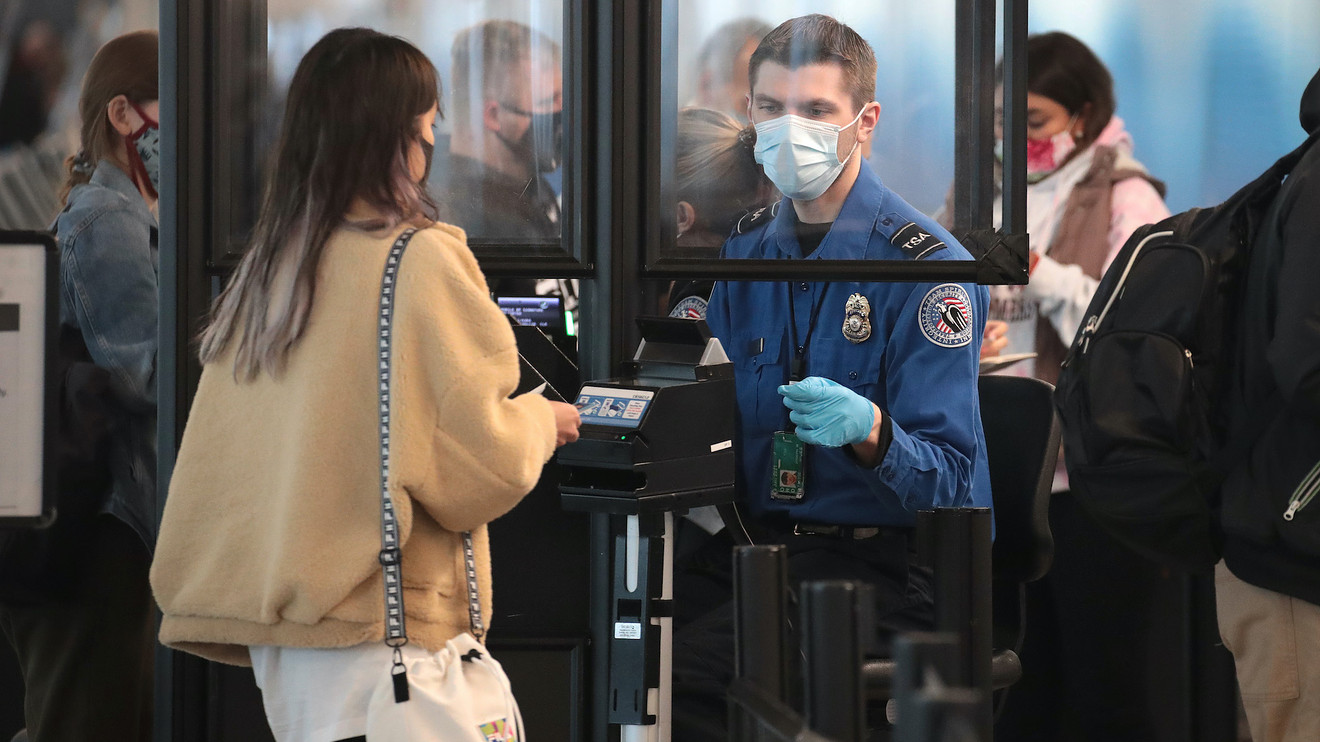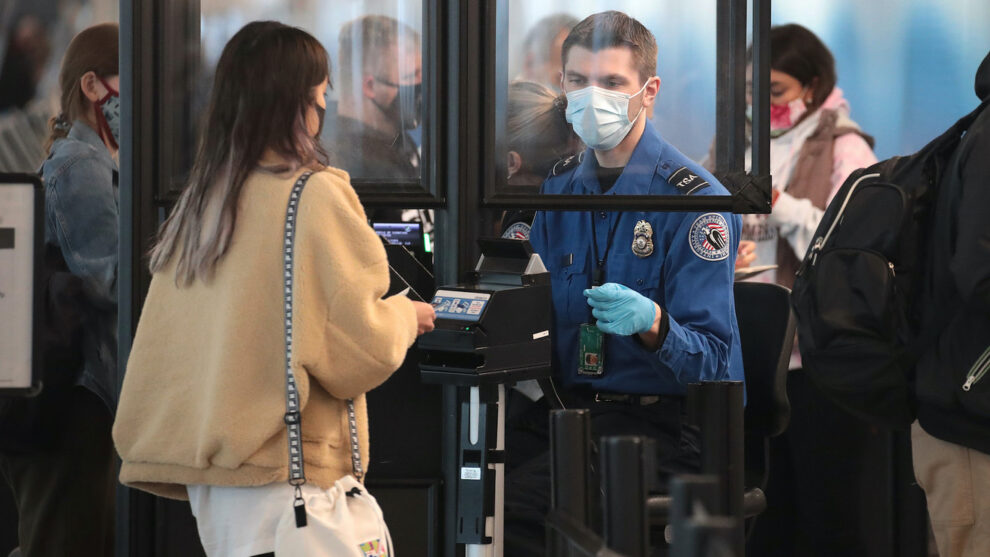
This article is reprinted by permission from NerdWallet.
In a time of uncertainty, doubt and downright misinformation, it can be hard to know whom or what institutions to trust about safety during the pandemic. And as families try to decide whether to travel home for the holidays, many remain unsure about the relative risks of air travel.
The Centers for Disease Control and Prevention currently claims that “most viruses and other germs do not spread easily on flights because of how air circulates and is filtered on airplanes.” But given how this agency seemingly waffled throughout the fall about whether the disease was airborne or not, its specific advice on air travel will likely fall on some skeptical ears.
Aircraft cabin air has a notorious reputation among many flyers — is it true that diseases like COVID-19 are unlikely to spread through it? Here are some factors to consider:
Ventilation
“[The CDC’s information] is reliable for how the air circulates and is filtered during the flight,” according to Molly Hyde, a board-certified expert and infection control practitioner. “When the ventilation system is running, the air moves from the ceiling to the floor, and the entire volume of air is replaced approximately every three minutes.”
Airlines have bent over backward to send this point home to potential customers, taking the pandemic as an opportunity to debunk the myth of “recycled air” on aircraft. Delta Air Lines DAL, +0.83% produced a video specifically addressing the issue, even peeling an orange on board to demonstrate how quickly particles are filtered out of the cabin.
Bolstering the notion that aircraft cabin ventilation mitigates transmission, the United States Transportation Command and Air Mobility Command recently released a report showing low aerosol transmission risk onboard commercial aircraft. The researchers used a human-like mannequin surrounded by particle counters in adjoining seats, and found “a minimum 54 flight hours required to produce in-flight infection from aerosol transmission.” In other words, sitting next to an infected passenger who is wearing a mask for less than 54 hours carries minimal risk, under the tested conditions.
This test is promising, but carries several limitations and caveats. For one, the mannequin behaved perfectly, wearing its mask throughout the “flight.” Real-world conditions, with passengers removing masks to eat and drink, would carry higher risks. Second, the particle counters detected only aerosols and did not account for other transmission methods, such as large droplets or surfaces. Still, this rigorous study backs up what the airlines have been harping on: Airplanes are well-ventilated spaces.
Yet Hyde adds one more caveat: Aircraft ventilation systems are effective only while they’re in use.
“The ventilation system is not always running when you are on the plane. It is typically turned off during the boarding and deplaning process, and is typically turned off if the plane is delayed and sitting on the tarmac,” Hyde says.
Masks and social distance
Ventilation is only one of the variables that affects the spread of COVID-19 in indoor spaces. Also important are maintaining distance and wearing masks, according to the CDC and most other experts.
Maintaining proper social distance of at least 6 feet is, frankly, impossible on most commercial aircraft. Although some airlines are blocking middle seats and limiting capacity on flights, the seats are still far closer than 6 feet, as we are all painfully aware.
On the other hand, all airlines now require face masks on board, and some have taken aggressive steps to ensure compliance. So, aircraft check two of the boxes for reducing transmission indoors (masks, ventilation) and fall short on one (social distance).
“It’s hard to quantify the level of risk because it will depend on so many factors,” Hyde says.
See: United Airlines tests COVID-19 ‘health pass’ to kick-start global travel again
Yet what about the canaries in the coal mine — those who have already flown in 2020? Have they experienced higher infection rates than the homebound?
Are air passengers getting sick?
The Transportation Security Administration reports that close to a million passengers are now passing through security checkpoints on a daily basis, with daily throughput numbers ranging from 667,000 to 984,000 so far in October. That’s still less than half the air traffic from this time last year, but far more than were traveling in the spring. This raises the question: Are these air passengers getting infected at higher rates?
Unfortunately, no systematic analysis of this kind has been reported, but some research is beginning to offer clues.
A brief report in the journal CMAJ found that, early in the pandemic, a COVID-19-positive patient flew with 350 other passengers from Guangzhou, China, to Toronto — a 15-hour flight — and seemingly did not transmit the virus. This was in January 2020, before any safety precautions such as face masks had been implemented.
Yet an upcoming report in the journal Emerging Infectious Disease suggests that the virus was transmitted from two business class passengers to at least two flight attendants on a 15-hour flight from Boston to Hong Kong in March, indicating that in-flight transmission is possible, even in a relatively spaced out business class cabin.
These reports are scattershot and do not reflect the current conditions on most aircraft. Masks are now required, long-haul international travel is uncommon and sick passengers are urged to stay home. Still, the possibility of transmission on board remains, and the hard data demonstrating that the risks have abated remains elusive.
And these risks are all relative to other daily activities, such as grocery shopping or dining out.
“A flight where passengers are relatively well spaced out, everyone is wearing masks correctly, and the ventilation system is running, is going to be less risky than a similarly crowded indoor restaurant where most people would not be wearing masks,” Hyde explains.
What about holiday travel?
The question of air travel safety is, in some ways, a Catch-22. If everybody decides it is safe to fly, then planes and airports will get flooded with travelers, and it will no longer be safe. This becomes a pressing concern as December approaches, with its potential hordes of holiday travelers.
Nobody knows how busy the skies will become by the holidays, so traveling at this time could carry higher risk. Booking flights at unpopular times, such as overnight, might improve the chances of boarding an emptier flight, but this is far from guaranteed to reduce risk.
Testing is another important consideration when making holiday travel plans, especially for families hoping to meet together after traveling. Getting the whole family tested, then forming a “household” or “pod” might seem like a safe bet, but this plan carries its own complications and risks.
“The challenge with testing,” Hyde notes, “is that you may not get an accurate result if you get tested too soon after you are infected.”
Getting tested immediately after traveling will likely result in a negative test, even if exposure occurred in-flight. Getting tested later will require isolating safely for many days before seeing family.
“If you are in a situation where you can quarantine for several days after you arrive, then I would recommend waiting a few days after arriving to get tested.”
No matter which strategy is employed, it’s important to remember that testing is not a silver bullet. “It’s simply one tool among many that can help reduce (not eliminate) the risk of transmission,” Hyde says.
The bottom line
Although airplane cabins seem like an ideal environment for the spread of the coronavirus, certain preliminary data and health experts suggest they are safer than they seem. That said, as the CDC’s website explains, “Sitting within 6 feet of others, sometimes for hours, may increase your risk of getting COVID-19.”
Read: How safe is an RV road trip?
Additionally, you must also factor in the risks associated with the other parts of travel outside of the actual flight, including transportation to and from the airport, navigating security and airport terminals, checking in to hotels or rental properties and other activities at your destination.
More from NerdWallet:
Sam Kemmis is a writer at NerdWallet. Email: [email protected]. Twitter: @samsambutdif.











Add Comment